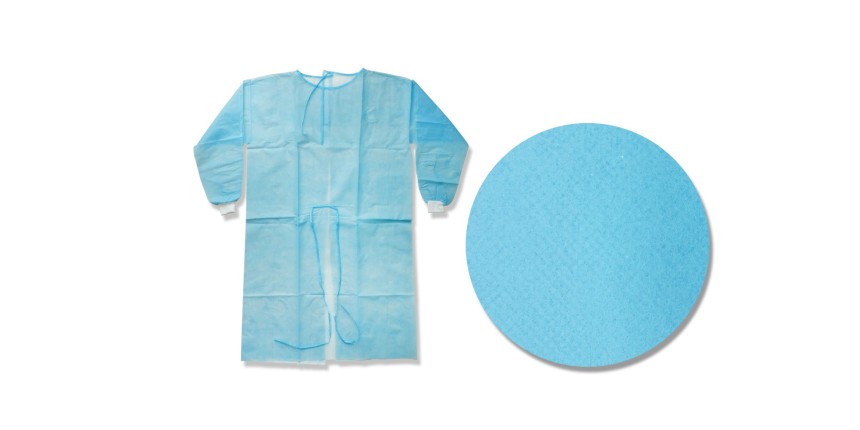In the fast-paced world of healthcare, where every detail matters, understanding the nuances of essential protective garments like surgical gowns and isolation gowns is paramount. These seemingly similar pieces of attire serve distinct purposes in the realm of infection control and safety. Let’s embark on a journey to unravel the key differences that set surgical gowns and isolation gowns apart, shedding light on when and why each is used.
Surgical Gowns: The Guardians in the Operating Room
When you envision a surgical gown, picture the high-stakes environment of an operating room. These gowns are meticulously designed to protect both the surgical team and the patient during invasive procedures. Here’s what makes them stand out:
Material Matters: Surgical gowns are typically made from fabric materials that offer a higher level of barrier protection. Materials such as cotton, cotton/polyester blends, and disposable nonwoven fabrics are commonly used. The choice of material is critical to prevent the transmission of microorganisms.
Sterility is Key: Unlike isolation gowns, surgical gowns must be sterile. They are packaged in a way that maintains their sterility until they are needed in the operating room. Sterilization processes, like gamma radiation or ethylene oxide, are employed to achieve this level of cleanliness.
Closed Front Design: Surgical gowns have a closed front design, ensuring that no skin or clothing underneath is exposed. This reduces the risk of contamination during surgery.
Longer Sleeves: Longer sleeves are a characteristic feature of surgical gowns. They provide comprehensive coverage, extending to the wrists, which is crucial in preventing contact with potentially infectious bodily fluids.
Isolation Gowns: Versatility in Infection Control
Isolation gowns, on the other hand, are the versatile workhorses of healthcare facilities. They serve multiple purposes, primarily focusing on preventing the spread of infection within a healthcare setting:
Material Variety: Isolation gowns come in a broader range of materials, from spun bond polypropylene to multi-layered nonwoven fabrics. These materials offer adequate protection for routine care activities.
Non-Sterile: Unlike surgical gowns, isolation gowns are typically non-sterile. They do not undergo the same rigorous sterilization processes as surgical gowns because they are not intended for use in sterile environments.
Open-Back Design: Isolation gowns often have an open-back design, making them easy to put on and take off. This design, while less protective than the closed front of surgical gowns, is suitable for their intended purposes.
Shorter Sleeves: The sleeves of isolation gowns are shorter, typically extending to the wearer’s elbows. While this provides adequate coverage for routine tasks, it does not offer the same level of protection as the longer sleeves of surgical gowns.
When to Use Each: A Clear Distinction
Now that we’ve explored the characteristics of surgical gowns and isolation gowns let’s delve into when and why they are used:
Surgical Gowns in the Operating Room: Surgical gowns are indispensable in the sterile environment of the operating room. They provide a high level of protection to the surgical team, maintaining sterility throughout the procedure. Their closed front design, longer sleeves, and tight cuffs are essential safeguards during surgeries.
Isolation Gowns for General Infection Control: Isolation gowns, with their versatility and ease of use, are employed in various healthcare settings. They are suitable for tasks such as administering medications, drawing blood, or providing general patient care. These gowns are also valuable in isolation units where patients with contagious diseases are treated.
Bulk Isolation Gowns in Epidemic Situations: During outbreaks or epidemics, healthcare facilities may require bulk isolation gowns to ensure the safety of healthcare workers and patients. These gowns serve as an additional layer of defense against the spread of infectious agents.
Final Words
In summary, surgical gowns and isolation gowns have distinct roles in the healthcare environment. Surgical gowns prioritize sterility and provide a high level of protection in the operating room, while isolation gowns offer versatility and are suitable for general infection control. Understanding these differences is crucial for healthcare workers, as it ensures that the right protective apparel is used in the right context, ultimately enhancing patient and staff safety.
In the world of infection control, where every precaution counts, healthcare facilities also prioritize the use of personal protective equipment (PPE) such as 3 ply disposable face masks. For instance, 3-ply disposable face mask suppliers play a vital role in ensuring a steady supply of masks that meet the stringent safety standards required in healthcare settings. These masks, like surgical and isolation gowns, contribute to the overall protection of healthcare workers and patients.





